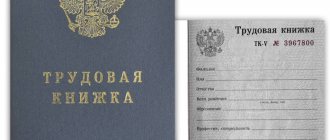Organizations can revaluate fixed assets (clause 15 of PBU 6/01 “Accounting for fixed assets”, approved by order of the Ministry of Finance of Russia dated March 30, 2001 No. 26n; hereinafter referred to as PBU 6/01). The main goal of this event is to determine the real value of fixed assets in accordance with their market prices and reproduction conditions on the date of revaluation.
It is up to the company to decide whether to revalue the property or not.
However, it is worth remembering: if a company has revalued its assets once, then in the future it should be carried out regularly, but not more than once a year. This condition is necessary to ensure that the cost of these fixed assets, at which they are reflected in accounting and reporting, does not differ significantly from the current (replacement) cost. The concept of materiality is given in paragraph 44 of the “Methodological instructions on accounting for fixed assets” (approved by order of the Ministry of Finance of Russia dated October 13, 2010 No. 91n, hereinafter referred to as Instructions No. 91n) and discussed with an example. Let's bring him. Example 1 Albatross LLC decided to revaluate fixed assets.
The cost of fixed assets at the end of the previous reporting year amounted to 1,000,000 rubles. The current (replacement) cost of objects of this homogeneous group at the end of the reporting year is 1,100,000 rubles. The resulting difference is considered significant: (1,100,000 - 1,000,000) / 1,000,000 = 0.1. Let's consider the same example, provided that the current (replacement) cost is 1,030,000 rubles. In this case, the decision on revaluation is not made, since the difference that arises is not significant: (1,030,000 - 1,000,000) : 1,000,000 = 0.03. However, from these calculations it is not entirely clear why a deviation of 10 percent is considered significant, but a deviation of 3 percent is not. Probably, the legislator implies a 5 percent materiality barrier, mentioned in the Instructions on the procedure for drawing up and presenting financial statements (approved by order of the Ministry of Finance of Russia dated July 22, 2003 No. 67n, as amended by orders of the Ministry of Finance of Russia dated December 31, 2004 No. 135n, dated September 18, 2006 No. 115n).
OS re-evaluated: main points
The possibility of additional valuation of fixed assets, as well as their markdown, is given in clauses 14–15 of PBU 6/01 “Accounting for fixed assets”, approved by order of the Ministry of Finance of the Russian Federation dated March 30, 2001 No. 26n. The procedure for revaluing the cost of accepting fixed assets for accounting is carried out so that fixed assets are reflected at a more current current (replacement) cost. The current value is equivalent to a certain amount of money that would have to be paid if a particular item needed to be replaced at the revaluation date.
We list the main rules for revaluation (devaluation or revaluation of fixed assets):
- Such a procedure is allowed only once a year, no more;
- the procedure is done for a group of similar objects;
- if the procedure is performed once, it should be done every year thereafter;
- At the same time, the cost of fixed assets (initial or current) and depreciation are revalued.
For information on how to determine the amount by which depreciation is adjusted, read the article “Revaluation of fixed assets in 2016–2017 - transactions”.
Features for state employees
Budgetary institutions must carry out revaluation according to different regulations. The procedure for recalculating costs by budgetary organizations is carried out in certain cases:
- If there is a corresponding decision from the Government of the Russian Federation (clause 28 of Instruction No. 157n).
- If a property asset is alienated not in favor of institutions belonging to the public sector (clauses 29, 30 of Federal Standard No. 257n, clause 28 of Instruction No. 157n).
The rules and deadlines for procedures are approved by the Government of the Russian Federation. The revaluation for budgetary institutions is regulated by a single procedure, enshrined in Orders of the Ministry of Economic Development of Russia No. 25, the Ministry of Finance of Russia No. 6n, the Ministry of Property of Russia No. 14, the State Statistics Committee of Russia No. 7 dated January 25, 2003 (as amended on October 2, 2006).
The procedure is carried out as of the beginning of the new financial year (clause 28 of Instruction 157n). During the revaluation process, the book value and depreciation charges for each fixed asset are recalculated.
Some asset categories are exceptions. For example, the values of the State Fund of the Russian Federation are overestimated by specialists from the Gokhran of the Russian Federation. In such cases, the estimated value of the State Fund assets is recalculated at prices and the official US dollar exchange rate current at the date of recalculation.
Exceptions include:
- OS, which are the property of the treasury. They are revalued immediately on the date of the transaction or budget reporting.
- OS that are not disposed of in favor of public sector organizations. In this case, the carrying amount is adjusted to the fair value at the time of revaluation.
To carry out a revaluation in a budgetary institution, it is necessary to decide on the method of the procedure, and then consolidate it in the accounting policy of the organization (clause 41 of Federal Standard No. 257n, Guidelines for Federal Standard No. 257n). There are two ways to identify the overvalued value of property:
- Recalculation of accumulated depreciation charges is directly proportional to the change in the original or book value of property assets. In this case, the result of the procedure should be equality of the residual and revalued values.
- The difference between original or book value and accumulated depreciation. The residual value must be brought to the value of the revalued value. In accounting, simultaneous entries are made to reduce the book value of the asset by the amount of previously accrued depreciation charges (Kt 0 101 00 000) and to increase the residual price of the fund by the amount of revaluation to fair value (Dt 0 101 00 000).
After the results of the recalculation, depreciation should be accrued for the remaining useful life of the object according to the standards in force before the start of the procedure.
The procedure for completing a recount is similar to how revaluation is carried out in commercial and non-profit organizations. First, an order or instruction is issued, then it is approved by management. The administrative documentation includes the following information (Letter of the Ministry of Finance of Russia No. 02-14-07/274 dated 02/08/2007):
- the composition of the commission and the regulations under which it operates;
- procedure for carrying out the procedure - stages of implementation, indicating responsible employees;
- period;
- deadlines for signing final acts;
- list of primary documentation and rules for preparing such documents.
The initial information is the accounting data of a budgetary institution and the results of a previously conducted inventory. All data must strictly correspond to each other.
After the recount is completed, the responsible employees draw up a final report, which will reflect the results of the procedure. The legislation does not provide for a unified form, therefore the organization has the right to develop the form independently, using the standards from clause 25 of Federal Standard No. 256n. The register must be approved in the accounting policy of the institution.
All supporting documents reflecting the final result are attached to the act.
How is the revaluation of fixed assets for production purposes reflected: accounts used for revaluation
Let's move on to accounting entries for additional valuation of fixed assets. To revaluate fixed assets, account 83 “Additional capital” is used if this procedure is carried out for the first time.
| Dt | CT | Description |
| 01 | 83 | An entry was made for the amount of increase in the value of fixed assets: an additional valuation of fixed assets was carried out |
| 83 | 02 | A posting has been made for the amount of change in depreciation |
If there is a subsequent revaluation, then it is necessary to look at whether there was an additional or devaluation in previous periods. If the first option, then the entries are similar; if a markdown occurred, then the amount of the revaluation should adjust it, reflecting it as other income.
| Dt | CT | Description |
| 91.2 | 01 | The amount of markdown in previous periods was recorded |
| 02 | 91.1 | A change in depreciation in previous periods was recorded during the writedown of fixed assets |
| 01 | 91.1 | An increase in the cost of fixed assets was recorded due to the amount of markdown of the previous year |
| 91.2 | 02 | An increase in depreciation was recorded due to the amount of its adjustment during markdown last year |
| 01 | 83 | If the amount of the revaluation exceeds the amount of last year’s depreciation, then the remainder is charged to additional capital |
| 83 | 02 | If the amount of the revaluation exceeds the amount of last year’s depreciation, then the depreciation adjustment also occurs in correspondence with the additional capital account |
We examined how the revaluation of fixed assets for production purposes is reflected. For other fixed assets, you can open a separate sub-account for account 83 (for example, if the organization owns a significant number of fixed assets of social significance).
Postings for markdowns occurring after revaluation in previous periods will look like this:
| Dt | CT | Description |
| 83 | 01 | A decrease in the cost of fixed assets was recorded due to the value of last year’s revaluation |
| 02 | 83 | A decrease in depreciation was recorded due to the amount of its adjustment during last year’s revaluation |
| 91.2 | 01 | If the amount of the markdown exceeds the amount of last year’s revaluation, then the balance goes to the account of other income and expenses |
| 02 | 91.1 | If the amount of the depreciation exceeds the amount of last year's revaluation, then the depreciation adjustment also takes place in the account of other income and expenses |
Postings for a budget institution
All transactions are reflected in budget accounting separately, in strict accordance with the information given in the accounting certificate in form 0504833.
The accounting records reflecting the results of the revaluation are given in the table.
| Postings | Standards | Operation description |
| For budgetary institutions | ||
| Dt 0 101 ХХ 310 Kt 0 401 30 000 | Clause 13, clause 29 of Instruction No. 174n | Accounting for revaluation of fixed assets |
| Dt 0 401 30 000 Kt 0 104 ХХ 411 | Reflection of the additional assessment of the amount of depreciation charges | |
| Dt 0 401 30 000 Kt 0 101 ХХ 410 | Accounting for asset depreciation | |
| Dt 0 104 ХХ 411 Kt 0 401 30 000 | Reflection of markdowns based on accrued depreciation amounts | |
| For government institutions | ||
| Dt KRB 1 101 1Х 310, Dt KRB 1 101 3Х 310 Kt KBK 1 401 30 000 | Clause 10 of Instruction No. 162n | Accounting for revaluation of fixed assets |
| Dt KBK 1 401 30 000 Kt KRB 1 401 1Х 411, KRB 1 104 3Х 411 | Reflection of the additional assessment of the amount of depreciation charges | |
| Dt KBK 1 401 30 000 Kt KRB 1 101 1Х 410, KRB 1 101 3Х 410 | Accounting for asset depreciation | |
| Dt KRB 1 104 1Х 411, KRB 1 104 3Х 411 Kt KBK 1 401 30 000 | Reflection of markdowns based on accrued depreciation amounts | |
| For autonomous institutions | ||
| Dt 0 101 ХХ 310 Kt 0 401 30 000 | Clause 13, clause 29 of Instruction No. 183n | Accounting for revaluation of fixed assets |
| Dt 0 401 30 000 Kt 0 104 ХХ 411 | Reflection of the additional assessment of the amount of depreciation charges | |
| Dt 0 401 30 000 Kt 0 101 ХХ 410 | Accounting for asset depreciation | |
| Dt 0 104 ХХ 411 Kt 0 401 30 000 | Reflection of markdowns based on accrued depreciation amounts | |
Is it possible to re-evaluate a newly purchased OS?
Revaluation of groups of similar fixed assets is possible only once a year or may not be carried out at all. At the same time, clause 15 of PBU 6/01 specifically indicates that this procedure is organized only at the end of the reporting year. Therefore, if a company bought a new fixed asset this year, it belongs to the group of revalued ones, according to internal documentation, and the economic situation is such that the cost of the fixed asset has changed significantly, then at the end of the reporting year an additional valuation (discount) of the newly purchased fixed asset is possible.
For more information on the revaluation of fixed assets, read our article “Why is the revaluation of fixed assets necessary?”
Goals and objectives
In accounting practice, the revaluation of fixed assets of an enterprise is carried out in order to:
- determine the adequate market value of this fixed asset;
- to attract investment partners (for example, for collateral value when lending);
- with prospects for increasing the authorized capital;
- with plans for restructuring;
- to clarify the cost and price of manufactured products (as part of financial analysis);
- to avoid a fall in the market value of assets below the authorized capital (this threatens the liquidation of the company);
- if you need to provide financial statements according to international standards;
- when insuring property (the insurance base is specified);
- the opportunity to reduce property tax (for companies with low profits), since the value of fixed assets on the balance sheet will decrease;
- a decrease in the income tax base (for profitable organizations) as a result of an increase in depreciation charges if the value of fixed assets increases after revaluation.
Useful life
After revaluation, the useful life of a fixed asset is not revised (clause 20 of PBU 6/01). If before the revaluation the fixed asset was not fully depreciated, determine the monthly amount of depreciation charges based on the replacement (residual taking into account revaluations) cost of the fixed asset determined based on the results of the revaluation (clause 19 of PBU 6/01). For example, if an organization uses the straight-line method, calculate the monthly amount of depreciation charges using the formula:
| Monthly amount of depreciation after revaluation of fixed assets using the straight-line method | = | Replacement cost of a fixed asset after revaluation | : | Remaining useful life of the fixed asset (month) |
If before the revaluation the fixed asset was fully depreciated, then after the revaluation there is no need to resume depreciation. This is explained by the fact that the amount by which the initial (replacement) cost of a fully depreciated fixed asset changes is equal to the amount by which accrued depreciation changes. That is, both before and after revaluation, the residual value of the fixed asset will be zero. This follows from paragraph 48 of the Methodological Instructions, approved by Order of the Ministry of Finance of Russia dated October 13, 2003 No. 91n.
An example of reflecting in accounting the primary revaluation of a fixed asset and subsequent depreciation
As of December 31, Alpha LLC conducted an initial revaluation of the computer. The organization has no other office equipment.
The residual value of the computer as of December 31 is 50,000 rubles. The remaining useful life is 20 months.
Based on the results of the revaluation, the initial cost of the computer should be increased by 2000 rubles, and the amount of accrued depreciation - by 200 rubles.
Alpha's accountant made the following entries in the accounting records:
Debit 01 Credit 83 subaccount “Revaluation of fixed assets” – 2000 rubles. – the initial cost of the computer was increased based on the results of revaluation;
Debit 83 subaccount “Revaluation of fixed assets” Credit 02 – 200 rub. – based on the results of revaluation, the accrued amount of depreciation on the computer was increased.
The replacement cost of the fixed asset after revaluation was:
52,000 rub. (50,000 rub. + 2,000 rub.).
Monthly amount of depreciation after revaluation of fixed assets using the straight-line method:
2600 rub. (RUB 52,000: 20 months).
From January of the year following the revaluation, the accountant calculated monthly depreciation in the amount of 2,600 rubles. and reflected in accounting by posting:
Debit 26 Credit 02 – 2600 rub. – depreciation has been accrued on the revalued computer.
What is it for?
The purpose of revaluation is to ensure the value of fixed assets in accordance with market demands and reproduction conditions.
The organization is not obliged to carry out this process - it is its right. But if you decide to revaluate one day, you will have to carry out the whole process regularly so that the price in the balance sheet corresponds to the replacement price.
If in any year the cost of fixed assets does not differ significantly from the market value, the revaluation process does not need to be carried out.
In order to determine such a need, you must act in accordance with methodological instructions No. 91, which states that a threshold of 5% is considered a significant difference.
In addition, the revaluation task is as follows:
- attracting investments - knowledge of the real value of fixed assets will help to obtain additional injections as a loan or loan;
- in case of increasing the size of the authorized capital by issuing securities;
- for the purpose of conducting analysis to determine the cost of production and its price.
Order of conduct
Revaluation of OS is carried out at the enterprise in the following order:
- An audit of non-current assets in need of revaluation is carried out. It is necessary to check their actual availability.
- An appropriate administrative act of the organization's management is drawn up, ordering the revaluation of existing fixed assets.
- Certain assets are revalued by the relevant specialists of the enterprise at the current (replacement) cost through direct recalculation, carried out according to actual market prices, or indexation.
- The results of the revaluation of fixed assets (revaluation, depreciation) are adequately reflected in the relevant accounting registers.
Revaluation of existing fixed assets implies updating their original (primary) value.
However, if these assets have already been revalued before, their current (replacement) value is subject to recalculation.
In addition, it is necessary to recalculate the amount of depreciation accrued (accumulated) during the operation of the corresponding object.
It is important to note! that the primary value of a property (asset) can be revalued both in the direction of its increase (this is the so-called revaluation) and in the direction of its decrease (we are talking about markdown).
The specifics of accounting for the results of such updating will be determined by whether a revaluation of a specific fixed asset has previously been carried out.
What is OS revaluation?
If a revaluation has not previously been made for specific fixed assets, accounting actions are carried out according to the following rule: the amount of revaluation of the asset is recorded as part of the so-called additional capital of the enterprise and, accordingly, is displayed on the credit of accounting account 83, known as “Additional capital”.
If an estimated revaluation of fixed assets has already been made, revaluation operations for similar objects are recorded in accounting somewhat differently.
Thus, the next revaluation of previously revalued fixed assets will be taken into account in the accounting registers as follows:
- If an asset has already been revalued earlier at this enterprise, the value of its next revaluation is taken into account in accounting account 83.
- If an asset has already been discounted before at a given enterprise, the amount of its revaluation, corresponding to the size of the discount made for previous reporting periods, is subject to credit to account 91, which, as is known, is used to account for other income and expenses. If the amount of the additional valuation of a fixed asset turns out to be greater than the amount of its depreciation recorded in accounting account 91, the amount of this excess must be attributed to accounting account 83 (the dynamics of additional capital are taken into account).
Reflection of revaluation in accounting
If a markdown has not previously been made for a specific asset, its revaluation is recorded as follows:
| Operation | Debit | Credit |
| Increase in primary value | 01-account | 83-score |
| Increasing the amount of depreciation | 83-score | 02-account |
If a depreciation was previously performed for a specific fixed asset object, its revaluation is taken into account as follows:
| Operation | Debit | Credit |
| Revaluation by an amount corresponding to the depreciation performed previously | 01-account | 91.1-account |
| Depreciation is overestimated (as part of the markdown performed previously) | 91.2-account | 02-account |
| Replacement cost is overestimated (more than the value of the previous markdown) | 01-account | 83-score |
| Depreciation is overestimated (more than the previous depreciation value) | 83-score | 02-account |
Markdown concept
If any revaluation has not previously been carried out for specific fixed assets, the corresponding accounting operations are performed according to the following rule: the amount of the depreciation of the asset is taken into account in the accounting account of other income and expenses of the enterprise and, accordingly, is reflected in the debit of accounting account 91, known as “ Other income and expenses."
Rule! The depreciation is taken into account as part of other expenses on account 91.
If a recalculation of the cost of fixed assets has already been made before, revaluation transactions are reflected in accounting in a different way:
- If an asset belonging to a given company has already been subject to revaluation before, the amount of its depreciation is taken into account in accounting account 83 by reducing the amount of additional capital formed by accumulating the amounts of revaluation of the asset for previous reporting periods. If the amount of the markdown turns out to be greater than the amount of its revaluation, then the amount of this excess must be included in the financial result as an element of other costs (account 91).
- If an asset belonging to this organization has already been discounted previously, the amount of its next markdown is taken into account in accounting account 91.
Accounting and postings
If a markdown has not previously been made for a specific asset, its revaluation is recorded as follows:
| Operation | Debit | Credit |
| Additional assessment of primary cost | 01-account | 83-score |
| Increasing the amount of depreciation | 83-score | 02-account |
If a depreciation was previously performed for a specific fixed asset object, its revaluation is taken into account as follows:
| Operation | Debit | Credit |
| Revaluation by an amount corresponding to the depreciation performed previously | 01-account | 91.1-account |
| Depreciation is overestimated (as part of the markdown performed previously) | 91.2-account | 02-account |
| Replacement cost is overestimated (more than the value of the previous markdown) | 01-account | 83-score |
| Depreciation is overestimated (more than the previous depreciation value) | 83-score | 02-account |






